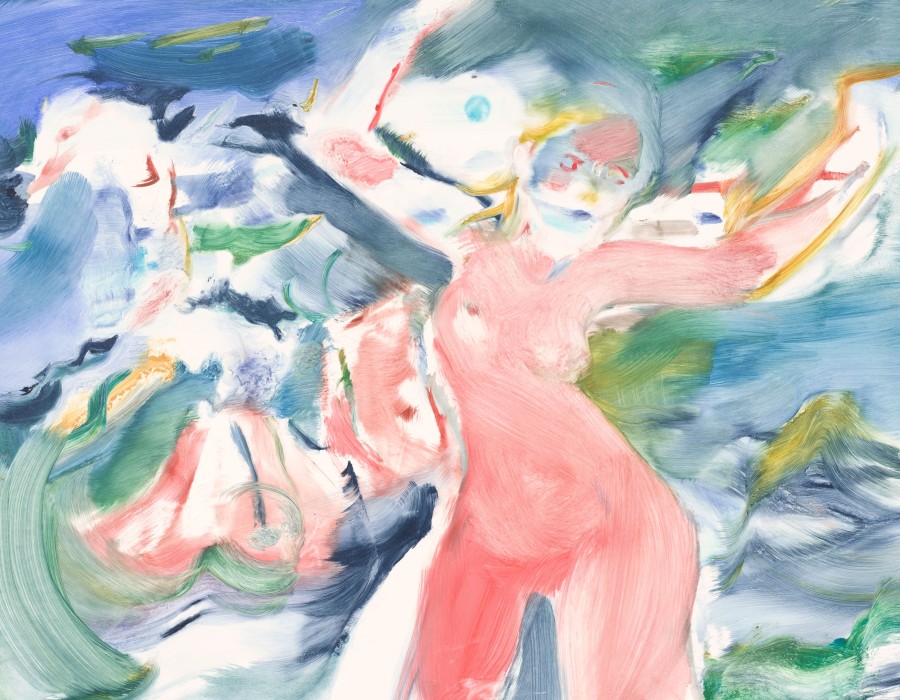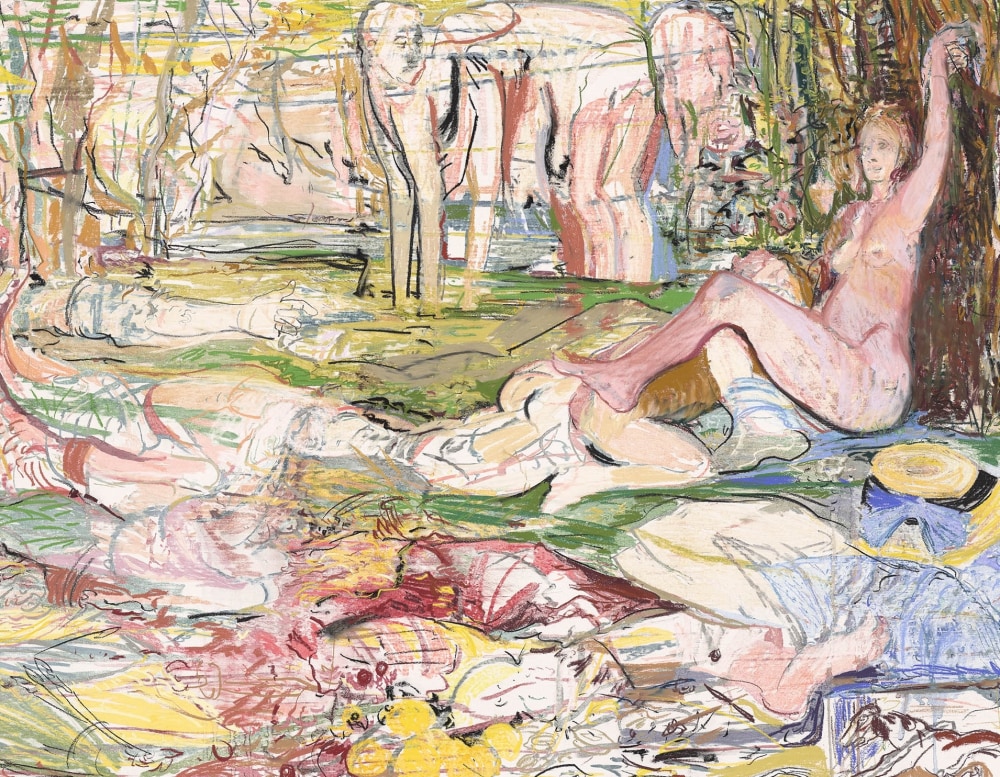

Édouard Manet’s Le Déjeuner sur l’herbe is regularly cited as the first modern painting. It has shocked viewers since 1863, when it was exhibited at Salon des Refusés, with its scandalous portrayal of real people, including a naked woman shown without the guise allegory. Since then it has inspired artists such as Claude Monet and Pablo Picasso, the later of whom created more than two hundred paintings, drawings and sculptures based on Manet’s painting.
In Cecily Brown’s latest body of monotypes, the artist draws heavily on Le Déjeuner sur l’herbe, taking Manet’s reference point and expanding on its themes of voyeurism, sexuality, and desire. In some works, Brown replicates the scene of the luncheon, with two formally dressed men, a nude woman who defiantly stares back at the viewer, and a bathing woman who confounds perspective by being too large for the illusion of receding into space. In others, she focuses on one aspect of the work, investigating a picnic basket with supple fruits spilling out. For the largest work of the series, Brown imagines a post-luncheon sexual encounter where only the straw hat, fruits and a heavily abstracted bathing woman allude to Manet’s masterpiece.
In these works, the use of pastel highlights Brown’s expert draughtsmanship. Whether she is elegantly rendering the drapery of the bathing woman’s dress, or chaotically overlaying colors to allude to the frenetic energy of an erotic tryst, the use of pastel reveals the artist’s hand in a way that is previously unprecedented in her monotypes. In making this series, Brown worked with pastel on a wood plate, the grain of which became a part of the work through the printing process. After the first printing, Brown returns to the plate and reworks the image that remains. A faint ghost image of the first print resides with newly added marks in the second, a process that often results in unexpected and complex compositions.